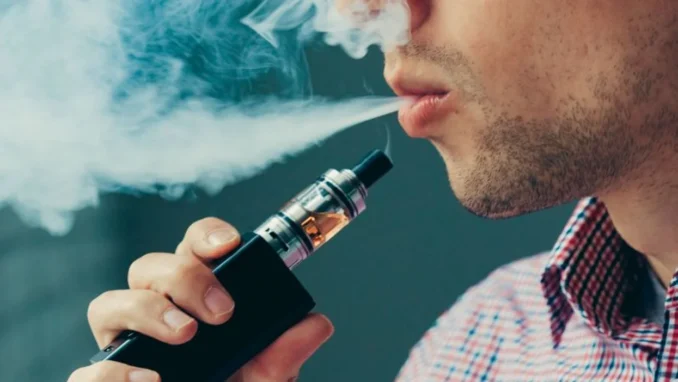Vaping and e-cigarettes have surged from their initial appearance as a niche product to a widespread global phenomenon in just a few short years. These products have captivated a diverse array of consumers, from former smokers seeking a cessation aid to newcomers drawn by the vast array of flavors and sleek device designs. Vape shops, which predominantly dot urban streets and online marketplaces, are specialized retail stores that cater to this booming demand. Their primary offerings include vaping devices, flavored e-liquids, and various accessories. These stores typically appeal to both seasoned users and curious beginners, carving out a unique market segment distinct from traditional tobacco retailers.
This article studies the multifaceted economic impacts of vape shops on local and global scales. By unpacking their direct contributions to economies, influences on adjacent industries, and challenges faced in a rapidly changing market, we aim to provide a comprehensive understanding of these modern establishments. Through this exploration, we propose that while vape shops have undeniably bolstered economic activity in numerous ways, they also mediate regulatory, health, and market dynamics that will shape their future trajectory.
Background

Source: europeanbusinessreview.com
The vaping industry’s metamorphosis from a nascent novelty to a mainstream market force has been nothing short of remarkable. What began in the early 2000s as an alternative to traditional smoking, primarily designed to help smokers quit, has burgeoned into a global market phenomenon. By the 2010s, advancements in technology, coupled with aggressive marketing strategies, catapulted vaping into the public consciousness. As of recent estimates, the global vaping market boasts a multi-billion-dollar valuation, with Asia-Pacific regions leading in consumption, followed closely by North America and Europe. Key industry players, such as Juul Labs, SMOK, and Vaporesso, dominate an industry that has evolved to serve not just those looking to quit smoking but also a newer generation drawn to the allure of diverse flavors and modern devices.
Direct Economic Contributions
Job Creation
The vaping industry has been a significant source of employment in many regions. According to a report from the American Vaping Association, over 10,000 vape stores were operating in the U.S. by 2018, employing an estimated 70,000 individuals. These roles range from retail positions and customer service to more specialized jobs such as mixologists who concoct e-liquid flavors.
Investment
Setting up a vape shop requires a blend of startup capital and strategic planning. While the initial cost can vary depending on location and size, it typically ranges from $25,000 to $50,000. This investment covers inventory, location lease, and marketing. Given the industry’s growth trajectory, there’s substantial revenue potential, with successful shops raking in hundreds of thousands annually.
Tax Revenue
Vape shops contribute to local economies through various tax channels. Besides the standard sales tax, which can vary from state to state, these businesses also pay business taxes. In areas where vaping products are heavily regulated, excise taxes or specific product levies can also add significant contributions to local and federal coffers.
Supply Chain Impacts

Source: consumer.healthday.com
Manufacturing
This involves the creation of vaping devices, meticulously formulated e-liquids, and a variety of accessories like coils, tanks, and batteries. Many major manufacturers are based in regions known for electronics production, with a significant portion hailing from Asia.
Distribution
Once produced, vaping products traverse vast networks to reach global markets. Regional distributors play a major role in this phase, ensuring goods move efficiently from manufacturers to retailers. This process involves a complex logistics system, encompassing warehousing, inventory management, and transportation, often spanning multiple countries.
Retail
The final step in the supply chain, retail, brings vaping products directly to the consumer. Brick-and-mortar vape shops have sprouted in cities worldwide, offering customers a tactile shopping experience. Concurrently, the digital revolution has given rise to a multitude of online vape stores, expanding reach and ensuring accessibility even in areas without physical outlets.
Impact on Adjacent Industries
Tobacco Industry

Source: thejakartapost.com
The rise of vaping has presented palpable challenges to the traditional tobacco industry. Many smokers have turned to e-cigarettes as a perceived healthier alternative or a cessation aid, causing a noticeable dip in traditional cigarette sales. In response, some big tobacco companies have pivoted, investing in or acquiring vaping ventures to maintain market relevance.
Health Sector
Vaping’s ascent has stirred varied reactions in the health community. Numerous research studies have been commissioned to understand its health implications, leading to a spectrum of findings. Concurrently, public health campaigns aim to educate about potential risks, and medical treatments are being developed to address vaping-related health concerns.
Technology
Device designs have evolved rapidly, shifting from rudimentary models to sophisticated gadgets with advanced user controls. Battery technology has seen enhancements for longer life and safer use, while e-liquid production has witnessed a surge in flavor variety and quality control measures.
Social and Community Contributions
Beyond their economic footprint, vape shops have made noteworthy strides in community engagement. Many have channeled resources into sponsorships and local involvements, supporting community events and local charities, thereby integrating themselves further into the local fabric. Simultaneously, the emergence of “vape lounges” has transformed some shops from mere retail outlets to community hubs, fostering socialization and camaraderie among enthusiasts. Recognizing the need for informed usage, many shops prioritize educational endeavors. This commitment manifests in workshops, safety demonstrations, and harm reduction initiatives that empower consumers with knowledge and ensure safer vaping practices.
The economic and social footprint of vape shops extends far beyond mere sales figures, reaching into job creation, innovation, and community involvement, in both health and regulatory arenas. Their rapid ascension from niche markets to mainstream prominence illustrates the dynamic nature of consumer trends and the industries that arise in response. As vaping continues to , it becomes more important to strike a balance between harnessing its economic potential and ensuring the well-being of communities and individuals alike.





